
The current National Nutrition Survey data is an eye opener for the Pakistani population. A healthy population is phenomenal towards building a strong nation and unfortunately we are one of the unhealthiest countries in the world.
[embed width="620"] http://vimeo.com/83747294 [/embed]
The numbers in this video are alarming. Besides the community outreach program and the mass level healthy eating campaign, it is time for each one of us to rethink our food choices. We have to bring about changes and shifts in our food intake and the food we cook and fill up our plates with. These little changes can trigger positive outcomes for the whole nation. Here is how they could help:
- In managing weight and preventing obesity
- In reducing the risk of chronic disease
- In reducing the risk of early death
- In ensuring a long and disease -free life
The foods that form our daily intake can have many negative effects on our bodies; they make our bodies more prone to heart, gastric and weight problems. We may think we are eating healthy but are in for a huge surprise. Due to technological advances, everything nowadays is processed. This may make the food look scrumptious but this food, in fact, has little or no nutritional value. These everyday meals include:
1- Grains:
[caption id="" align="alignnone" width="600"] Photo:AFP[/caption]
We have been eating polished rice, refined (white) atta (flour) and maida (finely milled flour). Processing grains may improve its texture, looks and taste but destroys the nutritional value like many important vitamins as well as the bran from the grains. To ensure its full nutritional value, you may want to switch to a healthier alternative such as: whole grains, bran rice, whole-wheat atta, whole grain barley, jai ka atta (oatmeal) and oats. These whole grains provide a substantial amount of intact vital nutrients like dietary fibres, several Vitamin-Bs’ (thiamin, riboflavin, niacin, and folate) and minerals like iron, magnesium and selenium.
2-Pulses:
[caption id="" align="alignnone" width="600"]
Photo:AFP[/caption]
We have been eating polished rice, refined (white) atta (flour) and maida (finely milled flour). Processing grains may improve its texture, looks and taste but destroys the nutritional value like many important vitamins as well as the bran from the grains. To ensure its full nutritional value, you may want to switch to a healthier alternative such as: whole grains, bran rice, whole-wheat atta, whole grain barley, jai ka atta (oatmeal) and oats. These whole grains provide a substantial amount of intact vital nutrients like dietary fibres, several Vitamin-Bs’ (thiamin, riboflavin, niacin, and folate) and minerals like iron, magnesium and selenium.
2-Pulses:
[caption id="" align="alignnone" width="600"] Photo:AFP[/caption]
We cook and eat washed/polished daals like Moong (green gram), Masoor (lentil seeds) and Maash (white daal) etcetera but by washing them, the companies industrially remove the husk and polish them which leave these pulses with zero nutritional value. Better alternatives to these types of daals are: Chilka wali Moong (Green gram with husk), Masoor and Maash because these daals are known to be cooked with their husk providing maximum benefits of eating fibre.
We also eat chickpeas and black gram which are good in their original form. Continue eating these in the same form and anything else which is in its whole form. Other examples of pulses with their high nutritional value are red kidney beans, soya beans, black beans and several other beans. Do remember one-fourth of our meal plates should be lentils and beans.
3- Salads:
[caption id="" align="alignnone" width="600"]
Photo:AFP[/caption]
We cook and eat washed/polished daals like Moong (green gram), Masoor (lentil seeds) and Maash (white daal) etcetera but by washing them, the companies industrially remove the husk and polish them which leave these pulses with zero nutritional value. Better alternatives to these types of daals are: Chilka wali Moong (Green gram with husk), Masoor and Maash because these daals are known to be cooked with their husk providing maximum benefits of eating fibre.
We also eat chickpeas and black gram which are good in their original form. Continue eating these in the same form and anything else which is in its whole form. Other examples of pulses with their high nutritional value are red kidney beans, soya beans, black beans and several other beans. Do remember one-fourth of our meal plates should be lentils and beans.
3- Salads:
[caption id="" align="alignnone" width="600"] Photo:AFP[/caption]
According to healthy standards, half of our meal should consist of vegetables and fruits. We, in Pakistan generally eat salads consisting of small portions of onions, tomatoes and cucumbers, and these are usually shared by the whole family! But switching to bigger servings of salads made with green leafy vegetables, iceberg lettuce, arugula (rocket salad), salad leaves, mustard seeds, methi (fenugreek), baby spinach and cabbage can be a more fulfilling and healthier choice. You can make your salad more enjoyable and tasty by adding bean sprouts and other raw vegetables with chunks of cottage cheese, depending on your choice to make the salad a side or a main course.
Green leafy vegetables and fruits generally used in salads are rich in Vitamins A, C and K which help build strong bones and increase bone mass density. Green leafy vegetables are also known be rich sources of many flavonoids and phytochemicals that act as anti-oxidants and are used in preventive measures for many diseases including Cardiovascular heart disease and many types of cancers.
4- Vegetables:
[caption id="" align="alignnone" width="600"]
Photo:AFP[/caption]
According to healthy standards, half of our meal should consist of vegetables and fruits. We, in Pakistan generally eat salads consisting of small portions of onions, tomatoes and cucumbers, and these are usually shared by the whole family! But switching to bigger servings of salads made with green leafy vegetables, iceberg lettuce, arugula (rocket salad), salad leaves, mustard seeds, methi (fenugreek), baby spinach and cabbage can be a more fulfilling and healthier choice. You can make your salad more enjoyable and tasty by adding bean sprouts and other raw vegetables with chunks of cottage cheese, depending on your choice to make the salad a side or a main course.
Green leafy vegetables and fruits generally used in salads are rich in Vitamins A, C and K which help build strong bones and increase bone mass density. Green leafy vegetables are also known be rich sources of many flavonoids and phytochemicals that act as anti-oxidants and are used in preventive measures for many diseases including Cardiovascular heart disease and many types of cancers.
4- Vegetables:
[caption id="" align="alignnone" width="600"] Photo:AFP[/caption]
Vegetable curries, shorba or bhaji are all cooked till the vegetables are discoloured. This is done in order to enjoy their optimum taste but leaves no room for nutrients. They might taste good but that is only because of the spices and oil they are cooked in. Make a healthy shift towards quick cooking techniques that preserve colour and nutrients at the same time. Select different coloured vegetables and cook them differently each time; you can sauté, stir fry, steam and grill vegetables using the same desi spices and herbs, making it a healthy move. In shorba salaam (broth) add vegetables in the last five minutes because, as stated before, vegetables can do without being heated for long periods of time.
5- Fried food and oil
[caption id="" align="alignnone" width="600"]
Photo:AFP[/caption]
Vegetable curries, shorba or bhaji are all cooked till the vegetables are discoloured. This is done in order to enjoy their optimum taste but leaves no room for nutrients. They might taste good but that is only because of the spices and oil they are cooked in. Make a healthy shift towards quick cooking techniques that preserve colour and nutrients at the same time. Select different coloured vegetables and cook them differently each time; you can sauté, stir fry, steam and grill vegetables using the same desi spices and herbs, making it a healthy move. In shorba salaam (broth) add vegetables in the last five minutes because, as stated before, vegetables can do without being heated for long periods of time.
5- Fried food and oil
[caption id="" align="alignnone" width="600"] Photo: AFP[/caption]
To say that our meals consist of a lot of deep fried food would be an understatement. It is time we switched to a healthier lifestyle before it’s too late! A healthier alternative would be switching to shallow frying and consuming fried food as a rare treat. Even if you are a fan of fried foods, try cooking them in minimal volumes of oil because more oil does not mean better taste. We love dropping our food in boiling hot oil, followed by sizzling sounds and a whiff of aroma but the food becomes carcinogenic the moment it boils. We can get the same taste and texture cooking in hot, and not boiling, oil.
6- Sugar
[caption id="" align="alignnone" width="600"]
Photo: AFP[/caption]
To say that our meals consist of a lot of deep fried food would be an understatement. It is time we switched to a healthier lifestyle before it’s too late! A healthier alternative would be switching to shallow frying and consuming fried food as a rare treat. Even if you are a fan of fried foods, try cooking them in minimal volumes of oil because more oil does not mean better taste. We love dropping our food in boiling hot oil, followed by sizzling sounds and a whiff of aroma but the food becomes carcinogenic the moment it boils. We can get the same taste and texture cooking in hot, and not boiling, oil.
6- Sugar
[caption id="" align="alignnone" width="600"] Photo:AFP[/caption]
Sugar and cocaine have the same traits; both are addictive and hazardous to our health. Scientists equate sugar with cocaine and consider it no less than a drug. Sugar is addictive, we crave it and all we consume are empty, harmful calories. We have become so used to adding white refined sugar to our teas and coffees – just think of the empty calories we are taking in! You must cut down your sugar intake if you want a healthy lifestyle. Starting having brown un-refined sugar, gurr/jaggery or if you can get maple syrup and stevia; these are sweet, contain nutrition and are not empty calories.
7- Fruits:
[caption id="" align="alignnone" width="600"]
Photo:AFP[/caption]
Sugar and cocaine have the same traits; both are addictive and hazardous to our health. Scientists equate sugar with cocaine and consider it no less than a drug. Sugar is addictive, we crave it and all we consume are empty, harmful calories. We have become so used to adding white refined sugar to our teas and coffees – just think of the empty calories we are taking in! You must cut down your sugar intake if you want a healthy lifestyle. Starting having brown un-refined sugar, gurr/jaggery or if you can get maple syrup and stevia; these are sweet, contain nutrition and are not empty calories.
7- Fruits:
[caption id="" align="alignnone" width="600"] Photo:AFP[/caption]
One fruit a day for an average adult is enough; there is no need to overdo it. Fresh juices have taken a popular spin since the advent of diets and detox regimes but it is still healthier to eat your fruits and not drink them. Crushing fruits for juicing purposes destroy the soluble fibres and fills your body, instead, with more sugar. This fruit fibre acts as a deterrent for the body and stops it from absorbing excess sugar. Read up on the nutrient content of fruits and try eating more of those that are high in nutrients but low on calories.
8- Proteins:
[caption id="" align="alignnone" width="600"]
Photo:AFP[/caption]
One fruit a day for an average adult is enough; there is no need to overdo it. Fresh juices have taken a popular spin since the advent of diets and detox regimes but it is still healthier to eat your fruits and not drink them. Crushing fruits for juicing purposes destroy the soluble fibres and fills your body, instead, with more sugar. This fruit fibre acts as a deterrent for the body and stops it from absorbing excess sugar. Read up on the nutrient content of fruits and try eating more of those that are high in nutrients but low on calories.
8- Proteins:
[caption id="" align="alignnone" width="600"] Photo:AFP[/caption]
We eat fat-laden curries, meats, organ meats on an everyday basis but what we forget is that animal meat may be a great source of proteins, like any other meat, but they come with saturated fats and high intake of any of these proteins can result in obesity and many diseases. With that said, it is still important to take small portions, limited to 45-50 grams, of protein every day to maintain good health.
The key to becoming and staying healthy is to consume things is moderation.
Select good fat free and lean sources of protein. Try to adjust your protein intake by having more plant proteins and very limited lean animal proteins (excluding eggs). Pulses, soya beans, quinoa grains, nuts and seeds are all rich in protein and do not block arteries. Eggs, fish and seafood are the best form of protein and omega fatty acid intake. You can still treat yourself to protein with small amounts of fat occasionally!
9- Dairy
[caption id="" align="alignnone" width="600"]
Photo:AFP[/caption]
We eat fat-laden curries, meats, organ meats on an everyday basis but what we forget is that animal meat may be a great source of proteins, like any other meat, but they come with saturated fats and high intake of any of these proteins can result in obesity and many diseases. With that said, it is still important to take small portions, limited to 45-50 grams, of protein every day to maintain good health.
The key to becoming and staying healthy is to consume things is moderation.
Select good fat free and lean sources of protein. Try to adjust your protein intake by having more plant proteins and very limited lean animal proteins (excluding eggs). Pulses, soya beans, quinoa grains, nuts and seeds are all rich in protein and do not block arteries. Eggs, fish and seafood are the best form of protein and omega fatty acid intake. You can still treat yourself to protein with small amounts of fat occasionally!
9- Dairy
[caption id="" align="alignnone" width="600"]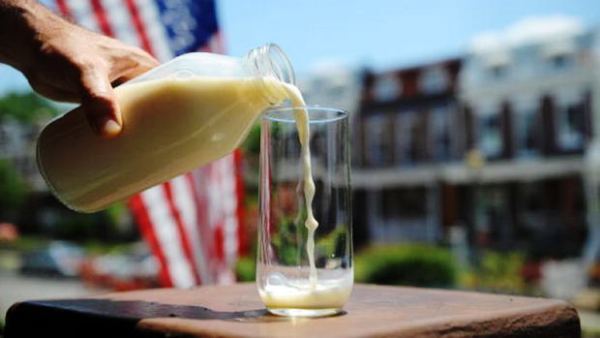 Photo: AFP[/caption]
Too much of dairy is not the secret to keeping us healthy. Milk and milk products are believe to be healthy snacks but this is a popular misconception. Even though dairy products are rich in good fats and proteins, there is no need to consume too much. Our daily intake should be limited to two to three servings of low fat dairy including the ones we add in our teas, coffees and desserts. Having low fat skimmed milk, cottage cheese, strained or greek yogurt in meals is definitely an added benefit.
10- Water, juices and drinks
[caption id="" align="alignnone" width="600"]
Photo: AFP[/caption]
Too much of dairy is not the secret to keeping us healthy. Milk and milk products are believe to be healthy snacks but this is a popular misconception. Even though dairy products are rich in good fats and proteins, there is no need to consume too much. Our daily intake should be limited to two to three servings of low fat dairy including the ones we add in our teas, coffees and desserts. Having low fat skimmed milk, cottage cheese, strained or greek yogurt in meals is definitely an added benefit.
10- Water, juices and drinks
[caption id="" align="alignnone" width="600"] Globally-popular carbonated drinks contain chemicals that cause cancer, according to the California-based Centre for Environmental Health (CEH). Photo: AFP[/caption]
The latest trend seen today is that of soda cans, bottled and packaged juices and sugary drinks. These drinks have become a significant part of our daily meals, available at local stores and school canteens. To be able to live an energetic lifestyle it is extremely important for us to scrap out all these carbonated drinks, bottled juices, vitamin water and the likes from our lives. Start drink water and you will see the benefit within a few weeks. 64 ounces of water a day should be the bare minimum.
So to summarise all the things needed to maintain a healthy and disease-free lifestyle, you must plan your meals and fill up your plate with:
Globally-popular carbonated drinks contain chemicals that cause cancer, according to the California-based Centre for Environmental Health (CEH). Photo: AFP[/caption]
The latest trend seen today is that of soda cans, bottled and packaged juices and sugary drinks. These drinks have become a significant part of our daily meals, available at local stores and school canteens. To be able to live an energetic lifestyle it is extremely important for us to scrap out all these carbonated drinks, bottled juices, vitamin water and the likes from our lives. Start drink water and you will see the benefit within a few weeks. 64 ounces of water a day should be the bare minimum.
So to summarise all the things needed to maintain a healthy and disease-free lifestyle, you must plan your meals and fill up your plate with:
- Nutrient-dense foods instead of calorie-dense foods
- Variety of fruits and vegetables in a rainbow of colours
- Low-fat or fat-free milk and dairy products
- Fibre-rich whole grains
- Protein foods that are low in fat
- Eat calories according to your weight and height.
- Enjoy your food, eat more but in smaller portions. This increases your metabolism.
- Cut back on foods high in ‘SOFAS’ (solid fat and added sugars) and empty calories.


 Photo: Masterchef Pakistan Facebook page[/caption]
Saturday’s episode was an international cuisine challenge, with each of the contestants assigned various cuisines. The efforts of the contestants reflected the steady influence of other cuisines in Pakistan. Out of the cuisines on offer, Chinese dishes seemed to provide the least challenge, probably because of how long that cuisine has been desi-fied.
The next easiest cuisines seemed to be Italian and Middle Eastern, perhaps because these became popular in Pakistan around a decade or so after Chinese food went main stream. The biggest challenge though seemed to be
Photo: Masterchef Pakistan Facebook page[/caption]
Saturday’s episode was an international cuisine challenge, with each of the contestants assigned various cuisines. The efforts of the contestants reflected the steady influence of other cuisines in Pakistan. Out of the cuisines on offer, Chinese dishes seemed to provide the least challenge, probably because of how long that cuisine has been desi-fied.
The next easiest cuisines seemed to be Italian and Middle Eastern, perhaps because these became popular in Pakistan around a decade or so after Chinese food went main stream. The biggest challenge though seemed to be  Photo: Masterchef Pakistan Facebook page[/caption]
Both Alavi and Hafeez’s qormas landed in the top five as did the Thai efforts of Sidra Kazi and Gulnaz.
[caption id="" align="alignnone" width="533"]
Photo: Masterchef Pakistan Facebook page[/caption]
Both Alavi and Hafeez’s qormas landed in the top five as did the Thai efforts of Sidra Kazi and Gulnaz.
[caption id="" align="alignnone" width="533"] Photo: Masterchef Pakistan Facebook page[/caption]
[caption id="" align="alignnone" width="533"]
Photo: Masterchef Pakistan Facebook page[/caption]
[caption id="" align="alignnone" width="533"]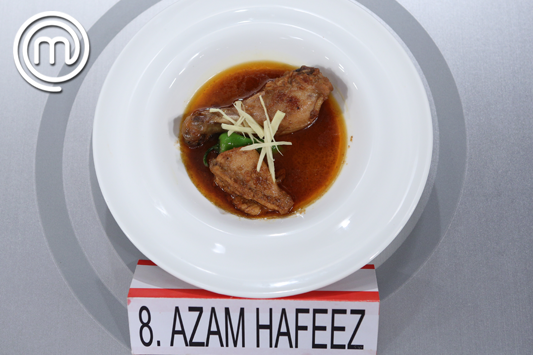 Photo: Masterchef Pakistan Facebook page[/caption]
[caption id="" align="alignnone" width="533"]
Photo: Masterchef Pakistan Facebook page[/caption]
[caption id="" align="alignnone" width="533"]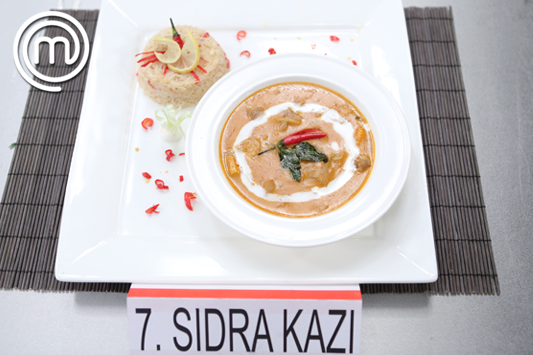 Photo: Masterchef Pakistan Facebook page[/caption]
[caption id="" align="alignnone" width="533"]
Photo: Masterchef Pakistan Facebook page[/caption]
[caption id="" align="alignnone" width="533"] Photo: Masterchef Pakistan Facebook page[/caption]
Speaking of Gulnaz, the housewife from Chitral had already become one of the show’s most endearing characters, but this week made her a cult figure. First, her Thai dish won Saturday’s episode, with Chef Zakir’s gentle teasing about her decoration of a cucumber cut as a smiley face was not only great TV but also further proof of why the velvet-jacket-loving chef remains the most engaging judge, with the knack of bringing out moments such as these.
[caption id="" align="alignnone" width="596"]
Photo: Masterchef Pakistan Facebook page[/caption]
Speaking of Gulnaz, the housewife from Chitral had already become one of the show’s most endearing characters, but this week made her a cult figure. First, her Thai dish won Saturday’s episode, with Chef Zakir’s gentle teasing about her decoration of a cucumber cut as a smiley face was not only great TV but also further proof of why the velvet-jacket-loving chef remains the most engaging judge, with the knack of bringing out moments such as these.
[caption id="" align="alignnone" width="596"] Photo: Masterchef Pakistan Facebook page[/caption]
But it was Gulnaz’s tears on Sunday that really melted the hearts. Having won immunity in the previous episode, she was still adamant at doing her best on Sunday’s challenge, which was to recreate a dish by Chef Shae. When asked about her fervour, Gulnaz broke down mentioning how the other contestants felt she didn’t know much as a chef, a reference to a comment by Ashraf. As she explained tearfully,
Photo: Masterchef Pakistan Facebook page[/caption]
But it was Gulnaz’s tears on Sunday that really melted the hearts. Having won immunity in the previous episode, she was still adamant at doing her best on Sunday’s challenge, which was to recreate a dish by Chef Shae. When asked about her fervour, Gulnaz broke down mentioning how the other contestants felt she didn’t know much as a chef, a reference to a comment by Ashraf. As she explained tearfully,
 Photo: Masterchef Pakistan Facebook page[/caption]
The bottom five included Zain Rasheed, Muddasir Elias, Mariam Nida, Khuram Haroon and Ashraf. Rasheed’s graph seems to be on a downward slide with him breaking down in tears in Saturday’s episode and failing to improve the next day. Nida was in the bottom five yet again, and yet somehow she escaped for another week. The contestant who eventually got eliminated was Elias. The Karachi-based manager had only just come into his own as a character as Saturday’s episode had an interview with him speaking of his pride in capitalising on his parents’ efforts to land a ‘white-collar job’ for himself. His elimination soon after felt a little abrupt since he had been one of the few
Photo: Masterchef Pakistan Facebook page[/caption]
The bottom five included Zain Rasheed, Muddasir Elias, Mariam Nida, Khuram Haroon and Ashraf. Rasheed’s graph seems to be on a downward slide with him breaking down in tears in Saturday’s episode and failing to improve the next day. Nida was in the bottom five yet again, and yet somehow she escaped for another week. The contestant who eventually got eliminated was Elias. The Karachi-based manager had only just come into his own as a character as Saturday’s episode had an interview with him speaking of his pride in capitalising on his parents’ efforts to land a ‘white-collar job’ for himself. His elimination soon after felt a little abrupt since he had been one of the few  Photo: Masterchef Pakistan Facebook page[/caption]
What has also been interesting to note is that the initial frontrunners –
Photo: Masterchef Pakistan Facebook page[/caption]
What has also been interesting to note is that the initial frontrunners – 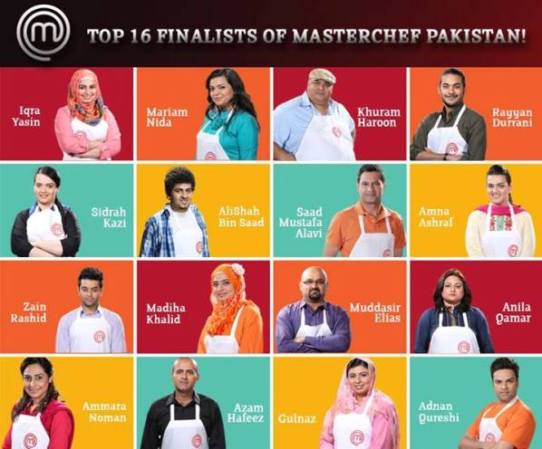 Photo: Masterchef Pakistan Facebook page[/caption]
Ultimately, that is where Masterchef and other reality shows take the
Photo: Masterchef Pakistan Facebook page[/caption]
Ultimately, that is where Masterchef and other reality shows take the 


 Photo: Ambreen Malik[/caption]
Ingredients:
Whole cumin – 1 tbsp
Whole coriander seeds – 1 tsp
Dried chillies – 4 to 5
Whole black peppercorns – ½ tsp
Method:
Dry roast all the spices in a frying pan. Once cooled, grind to make a powder. Store the spice mix in a sealed bag or container in the freezer for later use.
Phase 3: Make the bhallay -lentil cakes
[caption id="" align="alignnone" width="450"]
Photo: Ambreen Malik[/caption]
Ingredients:
Whole cumin – 1 tbsp
Whole coriander seeds – 1 tsp
Dried chillies – 4 to 5
Whole black peppercorns – ½ tsp
Method:
Dry roast all the spices in a frying pan. Once cooled, grind to make a powder. Store the spice mix in a sealed bag or container in the freezer for later use.
Phase 3: Make the bhallay -lentil cakes
[caption id="" align="alignnone" width="450"] Photo: Ambreen Malik[/caption]
Ingredients:
Mash lentil – 1 ½ cup (soaked overnight)
Baking powder – 2 tsps
Salt – 1 ½ tsps (adjust to taste)
Freshly grounded black peppercorn – 1 tsp
Oil – Preferably sunflower oil (to fry the bhallays)
Method:
Photo: Ambreen Malik[/caption]
Ingredients:
Mash lentil – 1 ½ cup (soaked overnight)
Baking powder – 2 tsps
Salt – 1 ½ tsps (adjust to taste)
Freshly grounded black peppercorn – 1 tsp
Oil – Preferably sunflower oil (to fry the bhallays)
Method:

 Photo: Ambreen Malik[/caption]
Method:
You can assemble them in individual serving dishes or in a large casserole style dish. Cover the base of the dish with the spiced sweet yogurt then add a few dollops of sweet tamarind sauce. Place the (water soaked and squeezed) lentil cakes on top of it. Top the lentil cakes with the remaining of the spiced sweet yogurt. Pour a few more swirls of sweet tamarind sauce. Add a dusting of
Photo: Ambreen Malik[/caption]
Method:
You can assemble them in individual serving dishes or in a large casserole style dish. Cover the base of the dish with the spiced sweet yogurt then add a few dollops of sweet tamarind sauce. Place the (water soaked and squeezed) lentil cakes on top of it. Top the lentil cakes with the remaining of the spiced sweet yogurt. Pour a few more swirls of sweet tamarind sauce. Add a dusting of 
 Photo: Saadia Tariq[/caption]
Ingredients: (Makes just about a cup)
Tahini paste - ¼ cup (available in most grocery stores now)
Photo: Saadia Tariq[/caption]
Ingredients: (Makes just about a cup)
Tahini paste - ¼ cup (available in most grocery stores now)
 Photo: Saadia Tariq[/caption]
Ingredients for the garnish:
- Paprika Powder
- Olive oil
- Nuts
- Parsley
Method:
1- Using a high-speed blender or food processor, blend the Tahini paste and lemon juice together; keep scraping the sides of the bowl with a spatula and blend until smooth and slightly creamy.
2- Tip in some olive oil, garlic, salt and cumin powder, and blend again.
3- Last but not the least, tip in the drained and skinned chickpeas, and blend again. You will see the hummus taking shape; it will be smooth yet will have small pieces of chickpeas. Add water, a tablespoon at a time, and blitz again. Keep an eye not to make the mixture very runny.
[caption id="" align="alignnone" width="600"]
Photo: Saadia Tariq[/caption]
Ingredients for the garnish:
- Paprika Powder
- Olive oil
- Nuts
- Parsley
Method:
1- Using a high-speed blender or food processor, blend the Tahini paste and lemon juice together; keep scraping the sides of the bowl with a spatula and blend until smooth and slightly creamy.
2- Tip in some olive oil, garlic, salt and cumin powder, and blend again.
3- Last but not the least, tip in the drained and skinned chickpeas, and blend again. You will see the hummus taking shape; it will be smooth yet will have small pieces of chickpeas. Add water, a tablespoon at a time, and blitz again. Keep an eye not to make the mixture very runny.
[caption id="" align="alignnone" width="600"] Photo: Saadia Tariq[/caption]
A smooth blend is now ready for you to arrange in a platter and serve. I used pine nuts, a sprinkle of paprika and a dash of olive oil, with warm breadsticks and crispy Melba toast.
Hummus will stay fresh in the refrigerator for up to a week. You can
Photo: Saadia Tariq[/caption]
A smooth blend is now ready for you to arrange in a platter and serve. I used pine nuts, a sprinkle of paprika and a dash of olive oil, with warm breadsticks and crispy Melba toast.
Hummus will stay fresh in the refrigerator for up to a week. You can 
 Photo: Tumblr[/caption]
That situation is then followed by the rating of the refreshment. The guest remembers a host on the basis of how divine the tea being served at theirs is. You often hear,
“The tea served at X’s house was very good.”
It is as if serving the best tea possible will help the social aunties climb the
Photo: Tumblr[/caption]
That situation is then followed by the rating of the refreshment. The guest remembers a host on the basis of how divine the tea being served at theirs is. You often hear,
“The tea served at X’s house was very good.”
It is as if serving the best tea possible will help the social aunties climb the  Photo: Pinterest[/caption]
In modern times, coffee may have made place in our kitchen cabinets but chai predominantly takes up the larger portion in our hearts. What started out as a trading commodity during the British reign of the subcontinent, now sits in our jars filled to the brim. It holds the first position on our grocery list.
However tea crazed we may be we cannot deny the multiple
Photo: Pinterest[/caption]
In modern times, coffee may have made place in our kitchen cabinets but chai predominantly takes up the larger portion in our hearts. What started out as a trading commodity during the British reign of the subcontinent, now sits in our jars filled to the brim. It holds the first position on our grocery list.
However tea crazed we may be we cannot deny the multiple  Photo: Tumblr[/caption]
Tea contains flavonoid, commonly known as Vitamin P, which impedes the formation of
Photo: Tumblr[/caption]
Tea contains flavonoid, commonly known as Vitamin P, which impedes the formation of  Photo: Giphy[/caption]
Likewise, teaholics, like me, have boosted the sales of
Photo: Giphy[/caption]
Likewise, teaholics, like me, have boosted the sales of  Photo: Tumblr[/caption]
Photo: Tumblr[/caption]

 Photo: Hannah Sutton[/caption]
The food tantalises your taste buds, teasing you with flavours either spicy or sweet and not much in between the two extremes. And then within 25 minutes the food is gone. Eventually your belly is so full and swollen that you have to sit down and give it some time to digest. You soon forget about fasting for the day as you fall into a mini ‘food coma’. But before you can really fade away, the next course is served.
[caption id="" align="alignnone" width="500"]
Photo: Hannah Sutton[/caption]
The food tantalises your taste buds, teasing you with flavours either spicy or sweet and not much in between the two extremes. And then within 25 minutes the food is gone. Eventually your belly is so full and swollen that you have to sit down and give it some time to digest. You soon forget about fasting for the day as you fall into a mini ‘food coma’. But before you can really fade away, the next course is served.
[caption id="" align="alignnone" width="500"]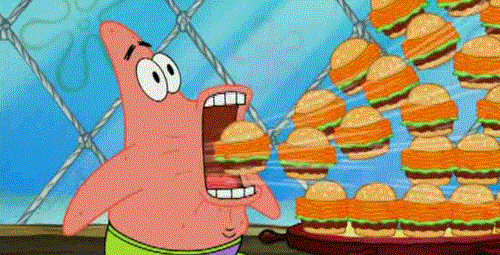 Photo: Tumblr[/caption]
At first, I thought the iftar was all inclusive. It was entrée, dinner and desert all in one. But over the next few weeks, I was to learn that this was not the case. Iftar is merely the beginning of a long night of eating,
Photo: Tumblr[/caption]
At first, I thought the iftar was all inclusive. It was entrée, dinner and desert all in one. But over the next few weeks, I was to learn that this was not the case. Iftar is merely the beginning of a long night of eating,  Photo: Tumblr[/caption]
The night begins with iftar then moves onto dinner, where the spread is just as impressive, with more food than I could ever dream of eating. Then of course after eating dinner you need something sweet, then it’s time for tea, more ‘snacks’, some more tea to ‘help you digest it’ and then
Photo: Tumblr[/caption]
The night begins with iftar then moves onto dinner, where the spread is just as impressive, with more food than I could ever dream of eating. Then of course after eating dinner you need something sweet, then it’s time for tea, more ‘snacks’, some more tea to ‘help you digest it’ and then  Photo: Tumblr[/caption]
Never send a girl to do a man’s job
On a separate note, we had another addition to the
Photo: Tumblr[/caption]
Never send a girl to do a man’s job
On a separate note, we had another addition to the  Photo: Tumblr[/caption]
We, girls, were all gathered in the lounge and soon regretted our desires to witness the evacuation. Cupboards were slammed, shoes were thrown and after a 10 minutes struggle, the noise ceased. There was a motionless black lizard lying on the ground and a room full of seven horrified girls. With the event fresh in our minds as we left the apartment that afternoon, Tatiana asked,
Photo: Tumblr[/caption]
We, girls, were all gathered in the lounge and soon regretted our desires to witness the evacuation. Cupboards were slammed, shoes were thrown and after a 10 minutes struggle, the noise ceased. There was a motionless black lizard lying on the ground and a room full of seven horrified girls. With the event fresh in our minds as we left the apartment that afternoon, Tatiana asked,

 Ingredients for Nurjehani Kheer. Photo: Saira Khan[/caption]
Method:
1. Blend the rice with a little milk to crush roughly.
2. Boil the milk and add rice, khoya, cardamom powder and sugar. Cook this over low heat until slightly thick.
3. Add custard powder, diluted in ¼ cup of milk, stirring rapidly until thick. Let it cool completely.
3. Now add condensed milk and mix well.
4. Dish it out in a serving bowl. Sprinkle chopped almonds and pistachios and dip the cham cham pieces in the kheer. Decorate with it chaandi warq.
[caption id="" align="alignnone" width="540"]
Ingredients for Nurjehani Kheer. Photo: Saira Khan[/caption]
Method:
1. Blend the rice with a little milk to crush roughly.
2. Boil the milk and add rice, khoya, cardamom powder and sugar. Cook this over low heat until slightly thick.
3. Add custard powder, diluted in ¼ cup of milk, stirring rapidly until thick. Let it cool completely.
3. Now add condensed milk and mix well.
4. Dish it out in a serving bowl. Sprinkle chopped almonds and pistachios and dip the cham cham pieces in the kheer. Decorate with it chaandi warq.
[caption id="" align="alignnone" width="540"] Nurjehani Kheer. Photo: Saira Khan[/caption]
Nurjehani Kheer. Photo: Saira Khan[/caption]
 2. Kheer Dilruba
Ingredients: (serves 6-8)
Milk – 1 litre
Rice – 1 cup (boiled and mashed)
Sugar – 3 to 4 tbsp
Vanilla custard powder – 3 to 4 tbsp
Condensed milk – 1 tin
Green cardamom powder – ½ tsp
Pineapple chunks – 1 tin
Bananas – 2 to 3 (finely chopped)
Peach – 1 large (finely chopped)
Almonds and pistachios – ¼cup each (finely chopped)
[caption id="" align="alignnone" width="540"]
2. Kheer Dilruba
Ingredients: (serves 6-8)
Milk – 1 litre
Rice – 1 cup (boiled and mashed)
Sugar – 3 to 4 tbsp
Vanilla custard powder – 3 to 4 tbsp
Condensed milk – 1 tin
Green cardamom powder – ½ tsp
Pineapple chunks – 1 tin
Bananas – 2 to 3 (finely chopped)
Peach – 1 large (finely chopped)
Almonds and pistachios – ¼cup each (finely chopped)
[caption id="" align="alignnone" width="540"] Ingredients for Kheer Dilruba. Photo: Saira Khan[/caption]
Method:
1. Boil the milk for five minutes and add rice and sugar. Boil it for a few more minutes and then thicken it with custard powder (diluted in a little milk).
2. Add almonds and pistachios. Mix it well again and turn off the flame. Let it cool completely.
3. Add all the fruits and condensed milk into it and garnish with pineapple chunks, almond and pistachio. Chill for four to six hours or overnight before serving for best results.
[caption id="" align="alignnone" width="540"]
Ingredients for Kheer Dilruba. Photo: Saira Khan[/caption]
Method:
1. Boil the milk for five minutes and add rice and sugar. Boil it for a few more minutes and then thicken it with custard powder (diluted in a little milk).
2. Add almonds and pistachios. Mix it well again and turn off the flame. Let it cool completely.
3. Add all the fruits and condensed milk into it and garnish with pineapple chunks, almond and pistachio. Chill for four to six hours or overnight before serving for best results.
[caption id="" align="alignnone" width="540"] Kheer Dilruba. Photo: Saira Khan[/caption]
Kheer Dilruba. Photo: Saira Khan[/caption]
 Ingredients for Coconut Kheer. Photo: Saira Khan[/caption]
Method:
1. Cook the tapioca (sabudana) with water until cooked, translucent and thick.
2. Add sugar and coconut milk and mix quickly. Stir it continuously until it becomes thick. Add cream and red food colour. Then mix well, turn off the heat and let it cool down.
3. Now add all the fruits and chill it before serving.
[caption id="" align="alignnone" width="498"]
Ingredients for Coconut Kheer. Photo: Saira Khan[/caption]
Method:
1. Cook the tapioca (sabudana) with water until cooked, translucent and thick.
2. Add sugar and coconut milk and mix quickly. Stir it continuously until it becomes thick. Add cream and red food colour. Then mix well, turn off the heat and let it cool down.
3. Now add all the fruits and chill it before serving.
[caption id="" align="alignnone" width="498"] Coconut Kheer. Photo: Saira Khan[/caption]
So there you have it - three simple Kheers that will keep your guests licking their spoons till the very end!
Eid Mubarak to all you kitchen experts (you might as well be one after all the hard work that goes on in the kitchen!).
Coconut Kheer. Photo: Saira Khan[/caption]
So there you have it - three simple Kheers that will keep your guests licking their spoons till the very end!
Eid Mubarak to all you kitchen experts (you might as well be one after all the hard work that goes on in the kitchen!).
 Photo: Hoagies Facebook page[/caption]
Hoagies drew a lot of popularity over social media and
Photo: Hoagies Facebook page[/caption]
Hoagies drew a lot of popularity over social media and  Photo: Hoagies Facebook page[/caption]
The place was well lit with wooden booths to accommodate all hunger struck victims and illustrated just the right image of what the eatery aims to do; be a
Photo: Hoagies Facebook page[/caption]
The place was well lit with wooden booths to accommodate all hunger struck victims and illustrated just the right image of what the eatery aims to do; be a  Photo: Hoagies Facebook page[/caption]
Photo: Hoagies Facebook page[/caption]
 Photo: Hoagies Facebook page[/caption]
Photo: Hoagies Facebook page[/caption]
 Photo: Hoagies Facebook page[/caption]
Photo: Hoagies Facebook page[/caption]
 Photo: Hoagies Facebook page[/caption]
Photo: Hoagies Facebook page[/caption]

 Photo: Sumayya Usmani[/caption]
Method:
1. Once the
Photo: Sumayya Usmani[/caption]
Method:
1. Once the  Photo: Sumayya Usmani[/caption]
3. To serve, sprinkle it with chaat masala and a squeeze of lemon – if you have not used the amchoor (mango powder).
This serves up to two people, best eaten with a curry and rice. It takes about 30 minutes to prepare
Now ensure you look out the window on a soggy day and enjoy this with some hot chai – wherever you are!
This post originally appeared
Photo: Sumayya Usmani[/caption]
3. To serve, sprinkle it with chaat masala and a squeeze of lemon – if you have not used the amchoor (mango powder).
This serves up to two people, best eaten with a curry and rice. It takes about 30 minutes to prepare
Now ensure you look out the window on a soggy day and enjoy this with some hot chai – wherever you are!
This post originally appeared 
 Photo: Sumayya Usmani[/caption]
Ingredients
Fresh white fish – 1 kilo (like hake, haddock or cod skinned fish, cut in palm sized fillets)
Mint leaves – 10 to 15
Deveined chillies – 2 to 4
Fresh coconut – ¼ of whole
Turmeric – ½ tsp
Lemon – 1 whole
Roasted cumin – 1 tsp
Coriander – half a bunch
Ginger/garlic paste – 1 tbsp
Banana leaves – 1-2 (large sized)
Jute twine or string – 1 roll (thick)
Salt to taste
Oil
[caption id="" align="alignnone" width="600"]
Photo: Sumayya Usmani[/caption]
Ingredients
Fresh white fish – 1 kilo (like hake, haddock or cod skinned fish, cut in palm sized fillets)
Mint leaves – 10 to 15
Deveined chillies – 2 to 4
Fresh coconut – ¼ of whole
Turmeric – ½ tsp
Lemon – 1 whole
Roasted cumin – 1 tsp
Coriander – half a bunch
Ginger/garlic paste – 1 tbsp
Banana leaves – 1-2 (large sized)
Jute twine or string – 1 roll (thick)
Salt to taste
Oil
[caption id="" align="alignnone" width="600"] Photo: Sumayya Usmani[/caption]
Method
For the hara masala, take the coriander, 10 to 15 mint leaves, chillies, fresh coconut, turmeric, lemon juice, cumin, garlic/ginger paste and salt, and grind all these together into a thick paste.
Take the large banana leaves and soak them in boiling water for about five minutes. Cut them to a size that will enable you to wrap the fish.
Marinate the fish pieces in the hara masala for up to 45 minutes then wrap them into the banana leaves in an ‘envelope’ style and tie these with the string. The fish should be completely covered.
Heat a little oil in a shallow pan and fry the wrapped fish on low heat, on each side, for about 7-8 minutes, until it’s done. Partially cover the pan as the fish will splutter quite a bit in the oil and the steam created helps in cooking the fish faster. Maintain low heat throughout and serve it immediately when it’s ready!
This serves about three to five people and it takes about an hour to make. For best results, do not reheat it and the fish should be cooked right before serving. Here is a menu suggestion: this fish can be served best with
Photo: Sumayya Usmani[/caption]
Method
For the hara masala, take the coriander, 10 to 15 mint leaves, chillies, fresh coconut, turmeric, lemon juice, cumin, garlic/ginger paste and salt, and grind all these together into a thick paste.
Take the large banana leaves and soak them in boiling water for about five minutes. Cut them to a size that will enable you to wrap the fish.
Marinate the fish pieces in the hara masala for up to 45 minutes then wrap them into the banana leaves in an ‘envelope’ style and tie these with the string. The fish should be completely covered.
Heat a little oil in a shallow pan and fry the wrapped fish on low heat, on each side, for about 7-8 minutes, until it’s done. Partially cover the pan as the fish will splutter quite a bit in the oil and the steam created helps in cooking the fish faster. Maintain low heat throughout and serve it immediately when it’s ready!
This serves about three to five people and it takes about an hour to make. For best results, do not reheat it and the fish should be cooked right before serving. Here is a menu suggestion: this fish can be served best with 
 Photo: Saadia Tariq[/caption]
Our first pick for the day were the strawberry samosas by Spoonful. Crisp samosas filled with deep fried strawberries covered in cream, Nutella and chopped strawberries. The only words to describe them: Brilliant and scrumptious!
[caption id="" align="alignnone" width="600"]
Photo: Saadia Tariq[/caption]
Our first pick for the day were the strawberry samosas by Spoonful. Crisp samosas filled with deep fried strawberries covered in cream, Nutella and chopped strawberries. The only words to describe them: Brilliant and scrumptious!
[caption id="" align="alignnone" width="600"] Photo: Saadia Tariq[/caption]
While my son and the hubby headed over to ‘Nano’s for a bun kebab, I looked around for something to my liking. The Danish open sandwiches with roast chicken and beef looked delectable, yet I found myself biting into the tangy, hot and extremely soft
Photo: Saadia Tariq[/caption]
While my son and the hubby headed over to ‘Nano’s for a bun kebab, I looked around for something to my liking. The Danish open sandwiches with roast chicken and beef looked delectable, yet I found myself biting into the tangy, hot and extremely soft  Photo: Saadia Tariq[/caption]
An instant noodle fan, my daughter did not want to budge from the Knorr stall, which also offered a game in exchange for a cup of noodles. While she slurped on the Cheese Chatkhara flavoured noodles, we moved onto more foodie exchanges.
[caption id="" align="alignnone" width="600"]
Photo: Saadia Tariq[/caption]
An instant noodle fan, my daughter did not want to budge from the Knorr stall, which also offered a game in exchange for a cup of noodles. While she slurped on the Cheese Chatkhara flavoured noodles, we moved onto more foodie exchanges.
[caption id="" align="alignnone" width="600"] Photo: Saadia Tariq[/caption]
A massive, freshly fried, crisp on the outside and moist and juicy on the inside, the chapli kebab from
Photo: Saadia Tariq[/caption]
A massive, freshly fried, crisp on the outside and moist and juicy on the inside, the chapli kebab from  Photo: Karachi Eat Food Festival Facebook page[/caption]
Our gluttony continued to a bowl of luke warm
Photo: Karachi Eat Food Festival Facebook page[/caption]
Our gluttony continued to a bowl of luke warm  Photo: Saadia Tariq[/caption]
Friends, peppy music, winter sun, happiness, food choices, chilled drinks, cupcakes, chicken karahis on coal, macaroons, homemade fudge, Glucose D drinks, curly fries, fresh juices – there was so much to ingest, enjoy and appreciate. Yet, some felt it was an unorganised, time and money wasting event. When the KKK (the
Photo: Saadia Tariq[/caption]
Friends, peppy music, winter sun, happiness, food choices, chilled drinks, cupcakes, chicken karahis on coal, macaroons, homemade fudge, Glucose D drinks, curly fries, fresh juices – there was so much to ingest, enjoy and appreciate. Yet, some felt it was an unorganised, time and money wasting event. When the KKK (the 
 2. You can’t tell the landscape of one from the other at times
Rocky, steep mountains which stand tall amidst azure streams, upon which frothy
2. You can’t tell the landscape of one from the other at times
Rocky, steep mountains which stand tall amidst azure streams, upon which frothy  3. We know our real wealth lies in the luscious, green lands
Though technological advancements have touched our lives, we continue to worship the land which sustains us. Such is the beauty of our fields that a stroll through the green countryside can drive away the worst worries from one’s life.
3. We know our real wealth lies in the luscious, green lands
Though technological advancements have touched our lives, we continue to worship the land which sustains us. Such is the beauty of our fields that a stroll through the green countryside can drive away the worst worries from one’s life.
 4. Cricket is not just a sport for us
The sport is a
4. Cricket is not just a sport for us
The sport is a  5. Our trucks can put the ‘Pimp My Ride’ team to shame
From couplets to wisecracks, anything and everything can be spotted adorning the trucks on the road. The splash of colour is proof of our ingenuity and affinity for art.
5. Our trucks can put the ‘Pimp My Ride’ team to shame
From couplets to wisecracks, anything and everything can be spotted adorning the trucks on the road. The splash of colour is proof of our ingenuity and affinity for art.
 6. We love to shake a leg
Many a times, what can’t be expressed through words, is better expressed through actions. And dance is the most tasteful collection of gestures. Both India and Pakistan have been blessed with varied
6. We love to shake a leg
Many a times, what can’t be expressed through words, is better expressed through actions. And dance is the most tasteful collection of gestures. Both India and Pakistan have been blessed with varied  7. Our voices are not drowned out in the streets
Meandering through the streets, one can come across the varied expressions of identity that the people indulge in. What meets the eye is a voice which is slowly, but surely building an
7. Our voices are not drowned out in the streets
Meandering through the streets, one can come across the varied expressions of identity that the people indulge in. What meets the eye is a voice which is slowly, but surely building an 8. A mother is just as indulgent on both sides of the border
They say that no one can love like a mother. And all mothers are capable of showering their children with their selfless love, no matter where they belong. This love can warm any person’s heart, no matter which side of the border they stand on.
8. A mother is just as indulgent on both sides of the border
They say that no one can love like a mother. And all mothers are capable of showering their children with their selfless love, no matter where they belong. This love can warm any person’s heart, no matter which side of the border they stand on.
 9. Tragedy has visited us uninvited
Sorrow knows no name, no creed. Both the countries and their citizens have had to face several tragedies.
9. Tragedy has visited us uninvited
Sorrow knows no name, no creed. Both the countries and their citizens have had to face several tragedies.  10. Selflessly serving the country is duty for us
A
10. Selflessly serving the country is duty for us
A  11. Our marketplaces are a reflection of our colourful lives
We don’t really know how to live without colours.
11. Our marketplaces are a reflection of our colourful lives
We don’t really know how to live without colours.  12. Our plate carries more than just food
12. Our plate carries more than just food
 13. Tea spells comfort for us
Nothing is more invigorating for our senses than a whiff of
13. Tea spells comfort for us
Nothing is more invigorating for our senses than a whiff of  14. The light of music shines bright in both the countries
Music is not just a part of our lives but is an indispensable part of our lives. From prayers to love songs to celebrations,
14. The light of music shines bright in both the countries
Music is not just a part of our lives but is an indispensable part of our lives. From prayers to love songs to celebrations,  15. We take great pride in our past
Yes, what is gone is gone to never return. But the beautiful memories, the achievements and the stories that our past has bequeathed us with, is something we are proud of.
15. We take great pride in our past
Yes, what is gone is gone to never return. But the beautiful memories, the achievements and the stories that our past has bequeathed us with, is something we are proud of.
 16. We abhor violence
We know very well that there are no winners in a war. So, all we hope for is peace and freedom from terrorism and all kinds of violence.
16. We abhor violence
We know very well that there are no winners in a war. So, all we hope for is peace and freedom from terrorism and all kinds of violence.
 Still not convinced?
If you think you can figure out the difference between India and Pakistan, try doing it on the Android app -
Still not convinced?
If you think you can figure out the difference between India and Pakistan, try doing it on the Android app - 
 Photo: Urooj Hussain[/caption]
This one is a no-brainer; there is not a thing which says Istanbul like freshly grilled Doner Kebabs. It’s by far the first thing that anyone tries as soon as they get to Istanbul and rightly so. The beef, along with the usual option of chicken as well, is grilled to perfection.
It is commonly labelled as a
Photo: Urooj Hussain[/caption]
This one is a no-brainer; there is not a thing which says Istanbul like freshly grilled Doner Kebabs. It’s by far the first thing that anyone tries as soon as they get to Istanbul and rightly so. The beef, along with the usual option of chicken as well, is grilled to perfection.
It is commonly labelled as a  Photo: Stock Photo[/caption]
[caption id="" align="alignnone" width="600"]
Photo: Stock Photo[/caption]
[caption id="" align="alignnone" width="600"] Photo: Urooj Hussain[/caption]
2. Pide (pronounced pee-day)
[caption id="" align="alignnone" width="600"]
Photo: Urooj Hussain[/caption]
2. Pide (pronounced pee-day)
[caption id="" align="alignnone" width="600"] Photo: Stock Photo[/caption]
Pide can be precisely described as the Turkish version of a thin-crust pizza. It consists of a flat, very thin bread topped with a layer of cheese and meat (or vegetables). It’s usually complemented with fresh greens, which can be adjusted to taste, and is commonly seen as easy snacking.
The servings normally look huge but that is because the bread is very flat and thin; thus one person can easily eat one serving.
3. Simit
[caption id="" align="alignnone" width="600"]
Photo: Stock Photo[/caption]
Pide can be precisely described as the Turkish version of a thin-crust pizza. It consists of a flat, very thin bread topped with a layer of cheese and meat (or vegetables). It’s usually complemented with fresh greens, which can be adjusted to taste, and is commonly seen as easy snacking.
The servings normally look huge but that is because the bread is very flat and thin; thus one person can easily eat one serving.
3. Simit
[caption id="" align="alignnone" width="600"] Photo: Urooj Hussain[/caption]
Simit is a must try!
Its dry, circular-shaped bread is usually crusted with sesame seeds. You get these from street vendors in just about every street corner of Istanbul. They can be eaten on their own, even though the vendors also serve them with ad-ons such as cream cheese or even
Photo: Urooj Hussain[/caption]
Simit is a must try!
Its dry, circular-shaped bread is usually crusted with sesame seeds. You get these from street vendors in just about every street corner of Istanbul. They can be eaten on their own, even though the vendors also serve them with ad-ons such as cream cheese or even  Photo: Urooj Hussain[/caption]
This is a no-miss. It is written as Cai, but pronounced as Chai; similar to how we say it back home.
The locals consume this as often as water intake, thus three to four cups in one sitting is a common practice. People in Istanbul are generous with tea, they usually serve it complimentary after every meal. It is served with sugar cubes and is similar to
Photo: Urooj Hussain[/caption]
This is a no-miss. It is written as Cai, but pronounced as Chai; similar to how we say it back home.
The locals consume this as often as water intake, thus three to four cups in one sitting is a common practice. People in Istanbul are generous with tea, they usually serve it complimentary after every meal. It is served with sugar cubes and is similar to  Photo: Urooj Hussain[/caption]
The Istanbul experience is not complete without the taste of freshly made, melt-in-your-mouth Baklava. This sweet dish is famous all over the
Photo: Urooj Hussain[/caption]
The Istanbul experience is not complete without the taste of freshly made, melt-in-your-mouth Baklava. This sweet dish is famous all over the  Photo: Urooj Hussain[/caption]
6. Mezze
[caption id="" align="alignnone" width="600"]
Photo: Urooj Hussain[/caption]
6. Mezze
[caption id="" align="alignnone" width="600"] Photo: Urooj Hussain[/caption]
[caption id="" align="alignnone" width="600"]
Photo: Urooj Hussain[/caption]
[caption id="" align="alignnone" width="600"] Photo: Urooj Hussain[/caption]
Mezze is a set of assorted snacks which are served cold and as an appetiser before meals. They have a range of delicious things such as
Photo: Urooj Hussain[/caption]
Mezze is a set of assorted snacks which are served cold and as an appetiser before meals. They have a range of delicious things such as  Photo: Urooj Hussain[/caption]
Reminiscent to the makai wallas that are commonly seen back home, Misir is also sold via street vendors in every corner of Istanbul.
Ranging from TL3 (the more tourist-intensive areas) to as low as TL1.5 in the quieter places. This healthy snack is another great option for something to eat on the go. It tends to be a lot milder then the makai served to us back home, thus make sure you ask the vendor to apply the lemon and salt as per your preference.
8. Pastries
In other words, desserts. Check out the picture below, it was taken at a bakery of local goodies.
[caption id="" align="alignnone" width="600"]
Photo: Urooj Hussain[/caption]
Reminiscent to the makai wallas that are commonly seen back home, Misir is also sold via street vendors in every corner of Istanbul.
Ranging from TL3 (the more tourist-intensive areas) to as low as TL1.5 in the quieter places. This healthy snack is another great option for something to eat on the go. It tends to be a lot milder then the makai served to us back home, thus make sure you ask the vendor to apply the lemon and salt as per your preference.
8. Pastries
In other words, desserts. Check out the picture below, it was taken at a bakery of local goodies.
[caption id="" align="alignnone" width="600"] Photo: Urooj Hussain[/caption]
[caption id="" align="alignnone" width="600"]
Photo: Urooj Hussain[/caption]
[caption id="" align="alignnone" width="600"] Photo: Urooj Hussain[/caption]
This was a strawberry tart that I tried with a friend at one of the local cafes. It was generously topped with cream-filled strawberries and a scrumptious chocolate base. It was so delicious that I couldn’t get enough of. I remember us being grouchy due to an extremely tiring day, but after trying this delightful dessert, we were far more radiant.
[caption id="" align="alignnone" width="600"]
Photo: Urooj Hussain[/caption]
This was a strawberry tart that I tried with a friend at one of the local cafes. It was generously topped with cream-filled strawberries and a scrumptious chocolate base. It was so delicious that I couldn’t get enough of. I remember us being grouchy due to an extremely tiring day, but after trying this delightful dessert, we were far more radiant.
[caption id="" align="alignnone" width="600"] Photo: Urooj Hussain[/caption]
9. Kumpir (stuffed-baked potato)
[caption id="" align="alignnone" width="600"]
Photo: Urooj Hussain[/caption]
9. Kumpir (stuffed-baked potato)
[caption id="" align="alignnone" width="600"] Photo: Stock Photo[/caption]
Kumpir has to be one of my most favourite foods in Istanbul. It is commonly available in the city and consists of a huge baked potato. First the potato is hollowed out and then mixed with seven to 10 toppings of your choice, then scooped back into the ‘jacket’ of the potato.The toppings available consist of simple butter, mayo, olives, couscous, sausages, corn, cheese, assorted vegetables, tuna and the likes. The prices vary with the number of toppings that you choose.
My advice is to select a maximum four toppings so that you can relish the taste of the potato as well, without confusing the savour with too many flavours.
10. Kunefa
[caption id="" align="alignnone" width="600"]
Photo: Stock Photo[/caption]
Kumpir has to be one of my most favourite foods in Istanbul. It is commonly available in the city and consists of a huge baked potato. First the potato is hollowed out and then mixed with seven to 10 toppings of your choice, then scooped back into the ‘jacket’ of the potato.The toppings available consist of simple butter, mayo, olives, couscous, sausages, corn, cheese, assorted vegetables, tuna and the likes. The prices vary with the number of toppings that you choose.
My advice is to select a maximum four toppings so that you can relish the taste of the potato as well, without confusing the savour with too many flavours.
10. Kunefa
[caption id="" align="alignnone" width="600"] Photo: Urooj Hussain[/caption]
*Sigh* (that is the gesture one makes while reminiscing about this dish)
If you think the strawberry pastry captivated your attention, then this famous Middle Eastern sweet dish is certainly at par.
It’s essentially a pastry of
Photo: Urooj Hussain[/caption]
*Sigh* (that is the gesture one makes while reminiscing about this dish)
If you think the strawberry pastry captivated your attention, then this famous Middle Eastern sweet dish is certainly at par.
It’s essentially a pastry of  Photo: Urooj Hussain[/caption]
11. Turkish Coffee
[caption id="" align="alignnone" width="450"]
Photo: Urooj Hussain[/caption]
11. Turkish Coffee
[caption id="" align="alignnone" width="450"] Photo: Urooj Hussain[/caption]
This is another trademark item which is not to be missed. But to be honest, I realised that this deserves to be mentioned after thoroughly thinking it through a few times.
Adapting to the taste of Turkish coffee is challenging for those who hold the habit of drinking sweet milky coffee. It is intensely strong, rich and full of flavour. Even four cubes of sugar would not alter its taste. While I am not a die-hard fan of coffee, there was something about this drink which appealed to me.
12. Manti (ravioli)
[caption id="" align="alignnone" width="600"]
Photo: Urooj Hussain[/caption]
This is another trademark item which is not to be missed. But to be honest, I realised that this deserves to be mentioned after thoroughly thinking it through a few times.
Adapting to the taste of Turkish coffee is challenging for those who hold the habit of drinking sweet milky coffee. It is intensely strong, rich and full of flavour. Even four cubes of sugar would not alter its taste. While I am not a die-hard fan of coffee, there was something about this drink which appealed to me.
12. Manti (ravioli)
[caption id="" align="alignnone" width="600"] Photo: Stock Photo[/caption]
The Turkish version of this Italian dish is quite different from most foods.
The dumplings are made of pasta stuffed with beef or mutton mince and thoroughly covered with garlic yogurt sauce. It’s similar to the combination of white
Photo: Stock Photo[/caption]
The Turkish version of this Italian dish is quite different from most foods.
The dumplings are made of pasta stuffed with beef or mutton mince and thoroughly covered with garlic yogurt sauce. It’s similar to the combination of white  Photo: Stock Photo[/caption]
I had to include this in the list!
Kokorech is basically goat intestines. Seems strange to us but it is a delicacy there. This is also found very easily in almost any cafe and is served in bread, giving an intense meaty taste. Give it a try if you are tolerant enough, as I could only manage one bite myself. This dish is undoubtedly for serious food-experimenting enthusiasts!
Please note that these dishes are what complimented my taste buds; if there is something that you have tried and feel it deserves to be mentioned, then do let me know in the comment section.
Happy eating!
This blog originally appeared
Photo: Stock Photo[/caption]
I had to include this in the list!
Kokorech is basically goat intestines. Seems strange to us but it is a delicacy there. This is also found very easily in almost any cafe and is served in bread, giving an intense meaty taste. Give it a try if you are tolerant enough, as I could only manage one bite myself. This dish is undoubtedly for serious food-experimenting enthusiasts!
Please note that these dishes are what complimented my taste buds; if there is something that you have tried and feel it deserves to be mentioned, then do let me know in the comment section.
Happy eating!
This blog originally appeared 

 Ingredients:
Water – 1 litre
Chicken powder –2 tbsp
Green chilli – 4 to 5 (sliced and seeded)
Rice – 1 tbsp
Lemons – 2
Salt – To taste
Ingredients:
Water – 1 litre
Chicken powder –2 tbsp
Green chilli – 4 to 5 (sliced and seeded)
Rice – 1 tbsp
Lemons – 2
Salt – To taste
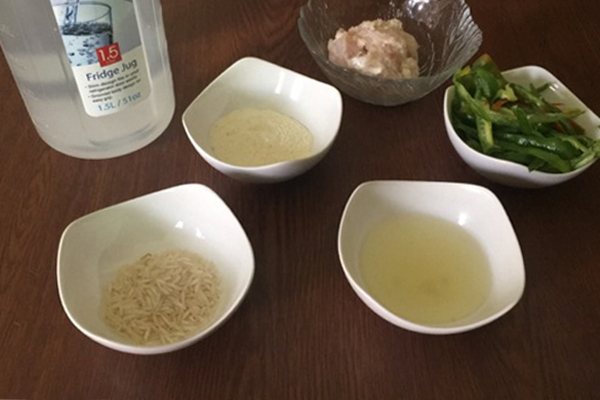
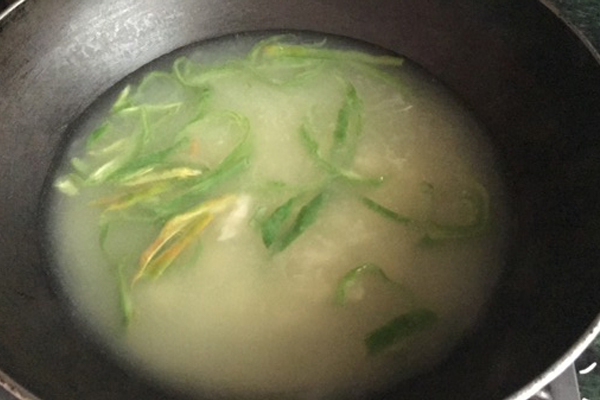
 Ingredients for marination
Chicken breast – 100 grams (sliced)
Corn flour – 1 tsp
White flour – 1 tsp
Oil – ½ tsp
Ingredients for marination
Chicken breast – 100 grams (sliced)
Corn flour – 1 tsp
White flour – 1 tsp
Oil – ½ tsp

 4. After 1-2 hours take the box out. Add flour and oil and shake well to coat the chicken evenly. Pop it back again in the fridge for at least ½ an hour.
5. Heat oil in a pan and fry the chicken
6. Once fried, take it out in a plate lined with tissue paper.
4. After 1-2 hours take the box out. Add flour and oil and shake well to coat the chicken evenly. Pop it back again in the fridge for at least ½ an hour.
5. Heat oil in a pan and fry the chicken
6. Once fried, take it out in a plate lined with tissue paper.
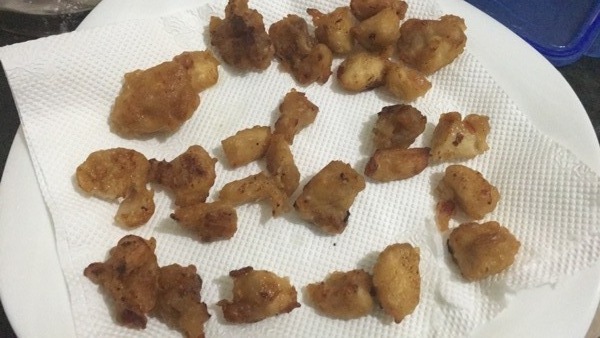

 Ingredients (Cupcakes)
Flour – 3 tbsp (less than one and a half cup)
Corn flour – 3 tbsp
Baking soda – ½ tsp
Vinegar – ½ tsp
Buttermilk – ½ cup
Red colour – 2 1/2 tbsp
Cocoa powder – 1 tbsp
Vegetable oil – ½ cup
Butter – ¼ cup
Eggs – 2 (seperated)
Sugar – 1 cup
Vanilla essence – ¾ tablespoons
Ingredients (Cupcakes)
Flour – 3 tbsp (less than one and a half cup)
Corn flour – 3 tbsp
Baking soda – ½ tsp
Vinegar – ½ tsp
Buttermilk – ½ cup
Red colour – 2 1/2 tbsp
Cocoa powder – 1 tbsp
Vegetable oil – ½ cup
Butter – ¼ cup
Eggs – 2 (seperated)
Sugar – 1 cup
Vanilla essence – ¾ tablespoons
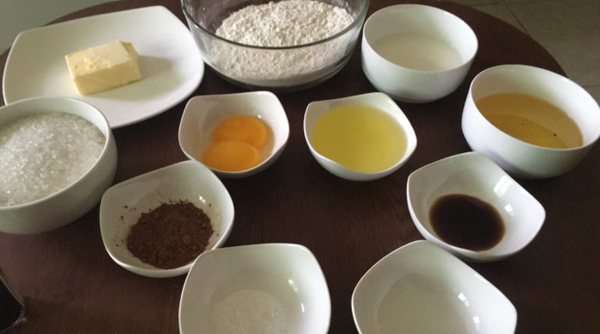 Ingredients (frosting)
Icing sugar– 2 cups
Cream cheese – 200 grams
Milk/cream – 1 to 2 tbsp
Butter – ¼ cup
Vanilla extracts – 1 tsp
Ingredients (frosting)
Icing sugar– 2 cups
Cream cheese – 200 grams
Milk/cream – 1 to 2 tbsp
Butter – ¼ cup
Vanilla extracts – 1 tsp



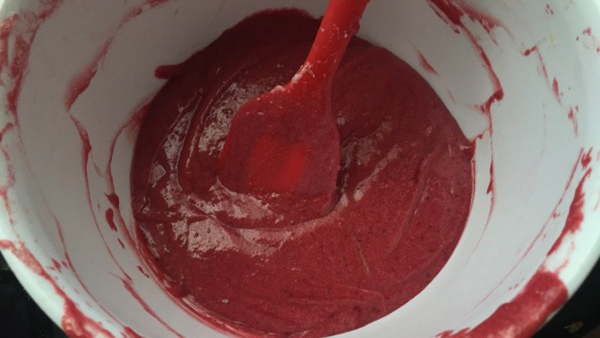 5. Add buttermilk altering with dry mixture to the eggs mixture.
6. Beat egg whites until stiff and fold in the mixture.
5. Add buttermilk altering with dry mixture to the eggs mixture.
6. Beat egg whites until stiff and fold in the mixture.

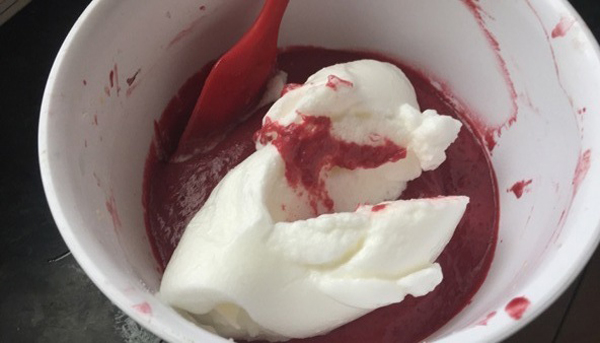 7. Lastly, mix the baking soda and vinegar, and quickly add it to the mixture.
8. Put the mixture in a muffin tray and pop it in the oven.
7. Lastly, mix the baking soda and vinegar, and quickly add it to the mixture.
8. Put the mixture in a muffin tray and pop it in the oven.
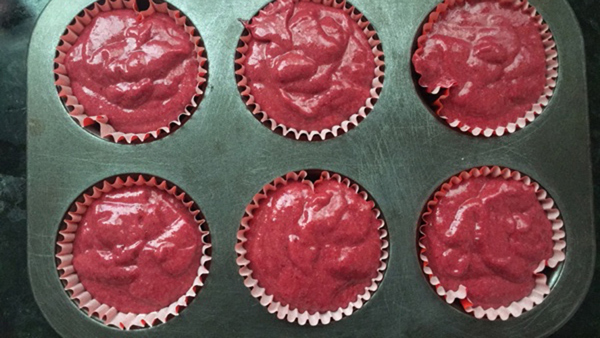 Instructions for frosting:
1. Beat cream cheese and butter together.
Instructions for frosting:
1. Beat cream cheese and butter together.
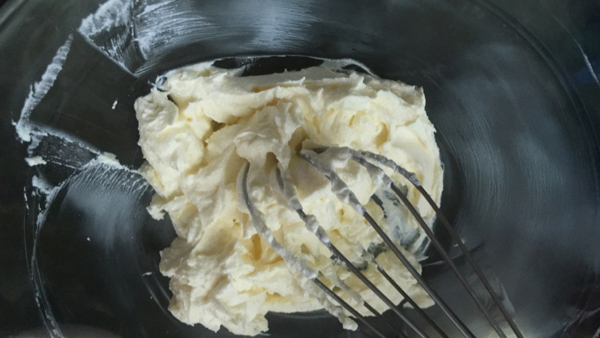
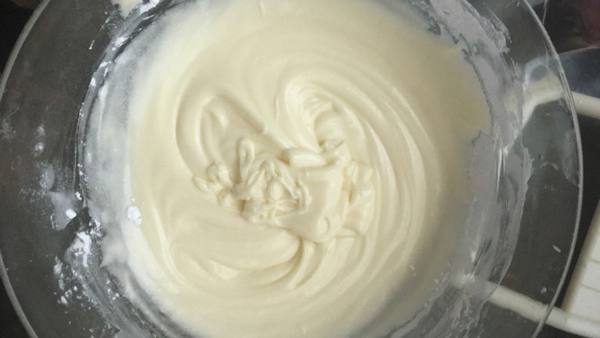


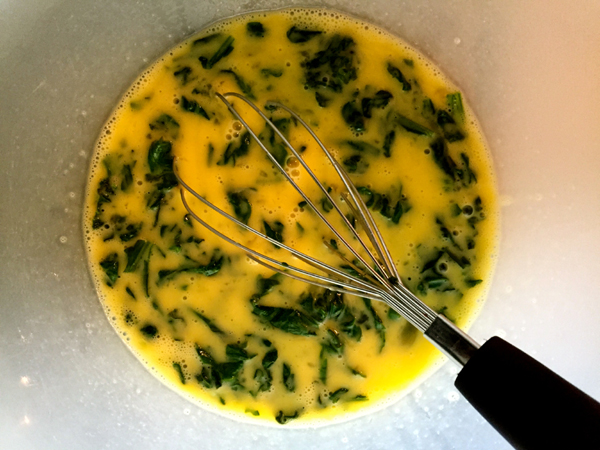 Spray each
Spray each 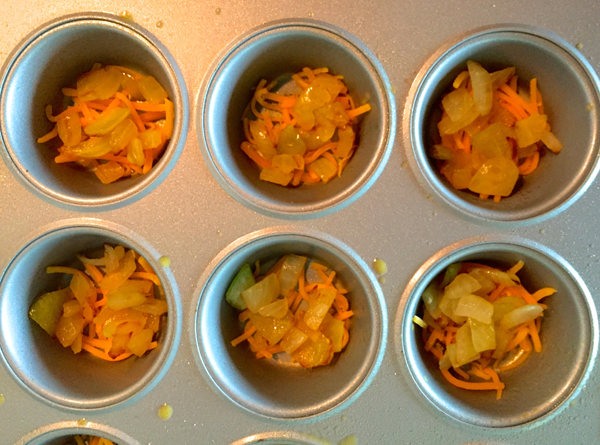 Stick them in the oven for 15 minutes or until they are nice and golden.
And like I said, if you aren’t into feta cheese and spinach, feel free to choose whatever you want as a filling. Sun dried tomatoes, asparagus, goat cheese, salmon, the sky is the limit!
This post originally appeared
Stick them in the oven for 15 minutes or until they are nice and golden.
And like I said, if you aren’t into feta cheese and spinach, feel free to choose whatever you want as a filling. Sun dried tomatoes, asparagus, goat cheese, salmon, the sky is the limit!
This post originally appeared 
 Photo: AFP[/caption]
Photo: AFP[/caption]
 Photo: AFP[/caption]
Photo: AFP[/caption]
 Photo: AFP[/caption]
Calmness and serenity tends to take over the mind and soul when visiting places like the
Photo: AFP[/caption]
Calmness and serenity tends to take over the mind and soul when visiting places like the 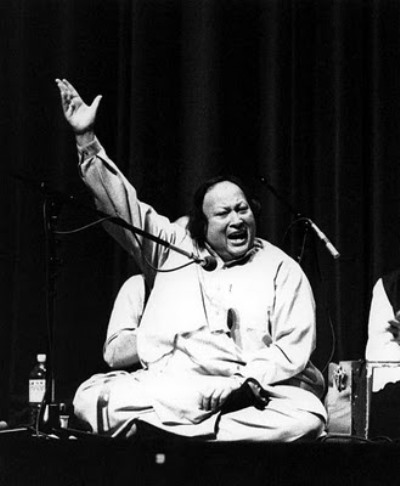 Photo: AFP[/caption]
Photo: AFP[/caption]
 Photo: File[/caption]
Over the past couple of decades, the Pakistani
Photo: File[/caption]
Over the past couple of decades, the Pakistani  Photo: AFP[/caption]
The Pakistani
Photo: AFP[/caption]
The Pakistani Uncles, Aunts, Siblings, Cousins and Friends; a Pakistani wedding is grand vibrant affair.
Uncles, Aunts, Siblings, Cousins and Friends; a Pakistani wedding is grand vibrant affair.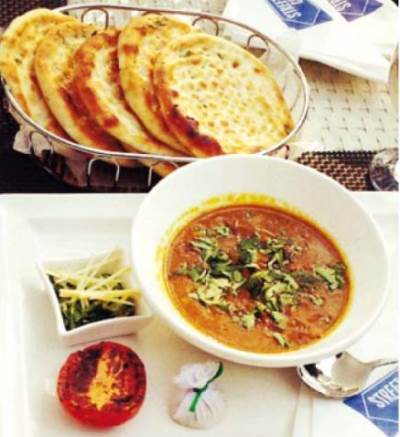 Photo: HAFSAH SARFARAZ[/caption]
Photo: HAFSAH SARFARAZ[/caption]
 Photo: File[/caption]
Photo: File[/caption]
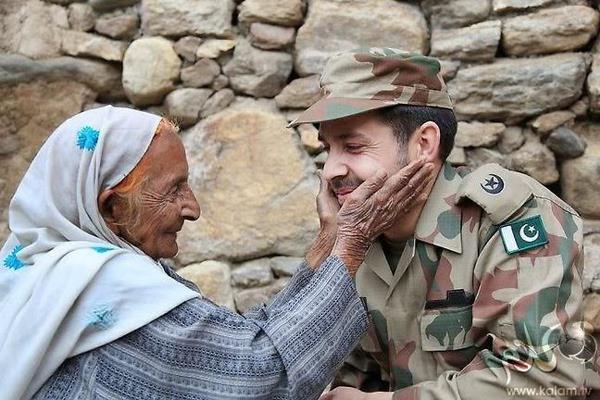 Photo: File[/caption]
One doesn’t need millions to help others out; you just have to be Pakistani. We put others
Photo: File[/caption]
One doesn’t need millions to help others out; you just have to be Pakistani. We put others 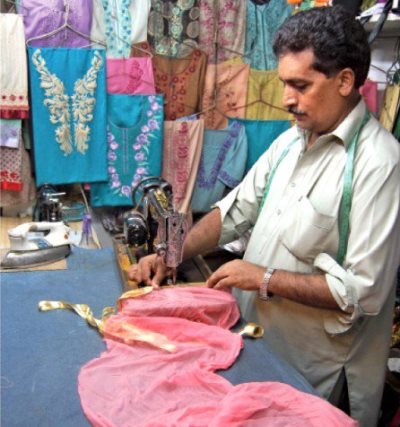 Photo: Express[/caption]
From a young age, we have been trained to work for what we want; nothing comes easily to the
Photo: Express[/caption]
From a young age, we have been trained to work for what we want; nothing comes easily to the  Photo: File[/caption]
Pakistan currently has a
Photo: File[/caption]
Pakistan currently has a  Photo: MQM[/caption]
In Pakistan, no task is too difficult. All you have to do is make sure you know a person with power and authority and voila, the sky’s the limit.
14. Nothing is spared from our critical analysis, even TV shows
[caption id="" align="alignnone" width="400"]
Photo: MQM[/caption]
In Pakistan, no task is too difficult. All you have to do is make sure you know a person with power and authority and voila, the sky’s the limit.
14. Nothing is spared from our critical analysis, even TV shows
[caption id="" align="alignnone" width="400"] An in depth analysis of the TV show Homeland.
An in depth analysis of the TV show Homeland. Photo: Getty Images[/caption]
Pakistan is home to some of the
Photo: Getty Images[/caption]
Pakistan is home to some of the 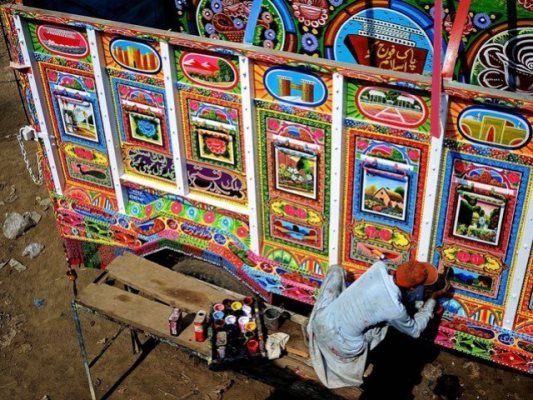 Photo: File[/caption]
Our
Photo: File[/caption]
Our  Photo: Reuters[/caption]
Photo: Reuters[/caption]
 Photo: Reuters[/caption]
We see their
Photo: Reuters[/caption]
We see their  The heartthrob of the Pakistani nation, Shahid Khan Afridi.
The heartthrob of the Pakistani nation, Shahid Khan Afridi. Photo: AFP[/caption]
Clad in green jerseys,
Photo: AFP[/caption]
Clad in green jerseys,  Photo: AP/Sani Maikatanga[/caption]
Our sehris and iftaris are nothing short of a
Photo: AP/Sani Maikatanga[/caption]
Our sehris and iftaris are nothing short of a  Dil Bola Pakola (The heart screams Pakola)
Dil Bola Pakola (The heart screams Pakola) Childhood memories come back to life!
Childhood memories come back to life!







